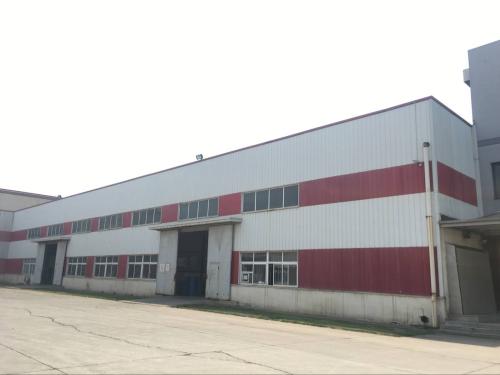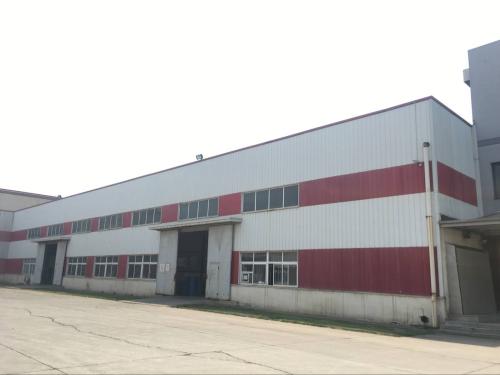产品展示
优质供应
详细内容
检测楼层承重检测标准|楼板承载力检测报告快讯新闻
《建筑地基处理技术规范》JGJ79-2012规定:
1、本试验要点适用于单桩复合地基载荷试验和多桩复合地基载荷试验。
2、复合地基载荷试验用于测定承压板下应力主要影响范围内复合土层的承载力。复合地基载荷试验承压板应具有足够刚度。单桩复合地基载荷试验的承压板可用圆形或方形,面积为一根桩承担的处理面积;多桩复合地基载荷试验的承压板可用方形或矩形,其尺寸按实际桩数所承担的处理面积确定。桩的中心(或形心)应与承压板中心保持一致,并与荷载作用点相重合。
3、试验应在桩顶设计标高进行。承压板底面以下宜铺设100~150mm中、粗砂垫层(桩身强度高时取大值)。如采用设计垫层厚度进行试验,对独立基础和条形基础应采用设计基础宽度,对大型基础有困难时应考虑承压板尺寸和垫层厚度对试验结果的影响。
试验标高处的试坑宽度和长度不应小于承压板尺寸的3倍。基准梁及加荷平台支点(或锚桩)宜设在试坑以外,且与承压板边的净距不应小于2m.
4、试验前应采取试坑内的防水和排水措施,防止试验场地地基土含水量变化或地基土扰动,影响试验结果。检测楼层承重检测标准|楼板承载力检测报告快讯新闻
5、加载等级可分为8~12级。加载压力不应小于设计要求承载力特征值的2倍。
6、每加一级荷载前后均应各读记承压板沉降量一次,以后每半个小时读记一次。当一小时内沉降量小于0.1mm时,即可加下一级荷载。
7、当出现下列现象时可终止试验:
(1)沉降急剧增大,土被挤出或承压板周围出现明显的隆起;
(2)承压板的累计量已大于其宽度或直径的6%;
(3)当达不到极限荷载,而加载压力已大于设计要求压力值的2倍。
8、卸载级数可为加载级数的一半,等量进行,每卸一级,间隔半小时,读记回弹量,待卸完全部荷载后间隔三小时读记总回弹量。
9、复合地基承载力特征值的确定:
检测楼层承重检测标准|楼板承载力检测报告快讯新闻
找深圳市住建工程检测有限公司, 李永江

二、楼板承重检测鉴定办理步骤:
(1)当压力—沉降曲线上极限荷载能确定,而其值不小于对应比例界限的2倍时,可取比例界限;当其值小于对应比例界限的2倍时,可取极限荷载的一半;
(2)当压力—沉降曲线是平缓的光滑曲线时,可按相对变形值确定;
1)对砂石桩、振冲桩复合地基或强夯置换墩:当以粘性土为主的地基,可取s/b或s/d等于0.015所对应的压力(s为载荷试验承压板的沉降量;b和d分别为承压板宽度和直径);当以粉土或砂土为主的地基,可取s/b或s/d等于0.01所对应的压力。
2)对土挤密桩、石灰桩或柱锤冲扩桩复合地基,可取s/b或s/d等于0.012所对应的压力。对灰土挤密桩复合地基,可取0.008所对应的压力。
3)对水泥粉煤灰碎石桩或夯实水泥土桩复合地基,当以卵石、圆砾、密实粗中砂为主的地基,可取s/b或s/d等于0.008所对应的压力;当以粘性土、粉土为主的地基,可取s/b或s/d等于0.01所对应的压力。
4)对水泥土搅拌桩或旋喷桩复合地基,可取s/b或s/d等于0.006所对应的压力。
5)对有经验的地区,可按当地经验确定相对变形值。对变形控制严格的工程也可按设计要求的沉降允许值作为相对变形值。
6)复合地基荷载试验,当采用承压板边长或直径超过2m的大承压板进行试验时,b或d按2m计。
按相对变形值确定的承载力特征值不应大于加载压力的一半。
10、试验点的数量不应少于3点,当满足其极差不超过平均值的30%时,设计时可取其平均值为复合地基承载力特征值。工程验收时应视建筑物结构、基础形式综合评价,对于独立基础,桩数少于5根或条形基础,桩数少于3排时应取值。

三、检测楼层承重检测标准|楼板承载力检测报告
1、当Q–s曲线上有比例界限时,取该比例界限所对应的荷载值。
2、当能确定极限荷载和比例界限,且极限荷载小于对应比例界限的荷载值的2倍时,取极限荷载值的一半。
3、出现Q–s曲线无法确定比例界限,承载力又没达到极限时,取试验荷载的一半所对应的荷载值。
4、当地基承载力特征值需要按地基变形取值时,可按下表对应的地基变形取值,但所取的承载力特征值不应大于试验荷载的1/2。
检测楼层承重检测标准|楼板承载力检测报告
房屋称重检测各种主要构件等级检测 :主要构件等级按构造、结构损伤和结构强度、裂缝及风化(或粉化)进行检测分析。 构造的检测,受检房屋的连接与砌筑方式不当,部分构件及连接部位开裂、变形、位移及松动现象明显,不符合国家现行规范要求。
一般什么情况下进行嘉兴市房屋称重检测呢? 房屋周边有工地像基坑开挖或新建地铁时担心对周边房屋有影响,这时需通过专业的第三方检测鉴定单位对基坑周边房屋的沉降情况进行监测。或者房屋新建好后,看房屋的沉降情况也会对房屋进行监测,如上海是软土地质,房屋在新建竣工后,因地质问题需几年时间进行沉降,这时需通过检测公司进行监测沉降情况。房屋沉降分为均匀沉降和不均匀沉降,当房屋产生不均匀沉降时需及时请第三方房屋鉴定单位对房屋进行整体的安全性检测评估,分析房屋有无存在安全隐患,发现问题及时进行加固,确保房屋的安全使用。
(1)用钻机先钻到需要进行标准试验的土层,清孔后,换用标准贯入器,并量得深度尺寸。
(2)将贯入器垂直打入试验土层中,先打入15cm,不计击数,继续贯入土中30cm,记录其击数,此数即为标准贯入击数N。
(3)提出贯入器,将贯入器中土样取出,进行鉴别描述,记录,然后换以钻探工具继续钻进,至下一需要进行的试验深度,再重复上述操作。
(4)在不能保证孔壁稳定的钻孔中进行试验时,应下套管以保护管壁,但试验深度必须在套管口75cm以下,或采用泥浆护壁。
(5)由于钻杆的弹性压缩会引起能量损耗,钻杆过长时传入贯入器的动能降低,因而减少每击的贯入深度,亦即提高了锤击数,所以需要根据杆长对锤击数进行修正。
(6)对于同一土层进行多次试验,然后取锤击数的平均值。
??钢筋桁架楼承板和普通楼承板有什么区别:但从总体比较来看,钢筋桁架板要比普通楼承板节省很多,主要体现在以下方面:1.现场钢筋捆扎量,钢筋桁架5kg左右,普通楼承板12kg左右。2.临时支撑,钢筋桁架板无支撑板跨可以设到4.8米,普通楼承板也就3米,需要大量临时支撑。3.工时,钢筋桁架板大大节省现场人工及工时,管理费用和人工费用都大大降低。4.工期提前,提前赢取经济效益5.无需抗剪和防火报告,钢筋桁架板性能与传统现浇板性能基本一致,后期维护费用无。所以对总包和业主来讲,总体对比成本和整体经济效益更科学,符合实际。

四、检测楼层承重检测标准|楼板承载力检测报告
钢筋桁架楼承板主要优势筋桁架楼承板是属于无支撑压型组合楼承板的一种;钢筋桁架是在后台加工场定型加工,现场施工需要先将压型板使用栓钉固定在钢梁上,再放置钢筋桁架进行绑扎,验收后浇筑混凝土。钢筋桁架楼承板主要优势:实现了机械化生产,有利于钢筋排列间距均匀、混凝土保护层厚度一致,提高了楼板的施工质量。装配式钢筋桁架楼承板可显着减少现场钢筋绑扎工程量,加快施工进度,增加施工安全保证,实现文明施工。 装配式模板和连接件拆装方便,可多次重复利用,节约钢材,符合国家节能环保的要求。钢构自主研发的产品配套自动化生产设备,大大提高了劳动生产率,有效降低了产品成本,并编制了产品生产企业标准、设计手册和节点构造图集以及施工手册。该产品通过浙江大学土木工程测试中心检测,并经过多项工程应用,各项性能可以满足现浇钢筋混凝土楼板承载力和变形的要求。
地基土承载力试验
用承压板现场试验确定地基土的承载力。
地基土荷载试验要点:
(1)试验基坑宽度不应小于承压板宽度或直径的3倍。应保持试验土层的原状结构和天然湿度。宜在拟试压表面用粗砂或中砂找平,其厚度不超过20mm.
(2)加荷分级不应少于8级。加载量不应小于设计要求的两倍。
(3)每级加载后,按间隔10、10、10、15、15min,以后每隔半小时测一次沉降量。当在连续的2h内,每小时的沉降量小于0.1mm时,则认为已趋稳定,可加下一级荷载。
(4)当出现下列情况时,即可终止加载:
■承压板周围的土体明显地侧向挤出
■沉降S急骤增大,荷载-沉降曲线出现陡降段
■在某一荷载下,24h内沉降速率不能达到稳定
■沉降量与承压板宽度或直径之比大于或等于0.06
[结论]当满足前三种情况时,其对应的前一级荷载定为极限荷载。同一土层参加统计的试验点不应少于3点,当试验实测值的极差不超过其平均值的30%时,取此平均值作为地基承载力特征值。
"Technical specification for building foundation treatment" JGJ79-2012 stipulates that:
1. The main points of this test are applicable to load test of single pile composite foundation and load test of multi pile composite foundation.
2. The load test of composite foundation is used to determine the bearing capacity of the composite soil layer under the main influence of the stress under the pressure plate. The loading test of composite foundation should have sufficient stiffness. The bearing plate of single pile composite foundation load test can be circular or square, and the area is the treatment area of a pile. The bearing plate of multi pile composite foundation load test can be square or rectangular, and its size is determined according to the actual area of the pile. The center of the pile (or the center of shape) should be consistent with the center of the pressure plate and coincide with the loading point.
3. The test should be carried out at the height of the pile top design. Under the bottom of the pressure plate, the 100 ~ 150mm medium and coarse sand cushion should be laid (when the strength of the pile is high). For example, the design foundation width should be adopted for independent foundation and strip foundation if the design cushion thickness is used. Considering the difficulty of large foundation, the influence of bearing plate size and cushion thickness on the test results should be considered.
The width and length of the test pit at the test mark should not be less than 3 times the size of the bearing plate. The base beam and the support point of the loading platform (or anchor pile) should be located outside the test pit, and the net distance from the side of the pressure plate should not be less than 2m.
4, waterproof and drainage measures should be taken in the test pit to prevent the change of soil water content or soil disturbance of foundation soil in the test site before the test, and the test results should be affected. Test report of news news bearing capacity test of floor bearing standard | floor
5, the loading grade can be divided into 8~12 levels. The maximum loading pressure should not be less than 2 times the characteristic value of the design requirement.
6, every load before and after the load should be read and remember the pressure board settlement once, after every half hour read and remember. When the settlement is less than 0.1mm in one hour, the first order load can be added.
7. When one of the following phenomena occurs, the test can be terminated.
(1) the settlement increases rapidly, obvious uplift appears around the soil extrusion or bearing plate;
(2) the accumulative amount of the pressure plate is more than 6% of its width or diameter.
(3) when the limit load is not reached, the maximum loading pressure is more than 2 times the pressure value of the design.
8, unloading series can be half of the load series, equal volume, each unloading level, half an hour interval, read and record resilience, after unloading all loads, interval three hours, read the total resilience.
9. The determination of the characteristic value of the bearing capacity of the composite foundation:

Two. The steps of checking and identifying the floor weight bearing test:
(1) when the limit load on the pressure settlement curve can be determined, and its value is not less than 2 times the corresponding limit, it is advisable to have a proportional limit; when its value is less than 2 times of the corresponding limit, it can take half of the ultimate load.
(2) when the pressure settlement curve is a smooth and smooth curve, it can be determined according to the relative deformation value.
1) of sand pile, vibro pile composite foundation and dynamic replacement: when the clay based foundation, take s/b or s/d is equal to 0.015, corresponding to the pressure (s for settlement; bearing plate loading test of B and D respectively. The bearing plate width and diameter); when the sand or silt. The foundation, take s/b or s/d is equal to 0.01, corresponding to the pressure.
2) for soil compaction pile, lime pile or column hammer flushing pile composite foundation, it is advisable that s/b or s/d be equal to the corresponding pressure of 0.012. There are 0.008 corresponding pressures on the composite foundation with lime soil compaction pile.
3) of cement fly ash gravel pile or rammed soil cement pile composite foundation, when the pebble, cobble and coarse sand based soil compaction, take s/b or s/d is equal to 0.008, corresponding to the pressure; when the clay, silty soil foundation, the pressure of desirable s/b or s/d is equal to 0.01, corresponding to the.
4) for cement soil mixing pile or rotary jet pile composite foundation, it is advisable that s/b or s/d be equal to the corresponding pressure of 0.006.
5) for experienced areas, relative deformation values can be determined according to local experience. A project with strict deformation control can also be considered as the relative deformation value according to the required settlement allowable value of the design.
6) load test of composite foundation, when the pressure plate with length or diameter more than 2m is tested, B or D is calculated by 2m.
The characteristic value of the bearing capacity determined by the relative deformation value should not be more than half of the maximum loading pressure.
10, the number of test points should not be less than 3 points. When it meets 30% of its average range, the average value of its design is the characteristic value of composite foundation bearing capacity. When the project is checked and accepted, it should be evaluated comprehensively according to the structure and foundation of the building. For the independent foundation, the number of piles is less than 5 or strip foundation, and the minimum value should be when the number of piles is less than 3 rows.










